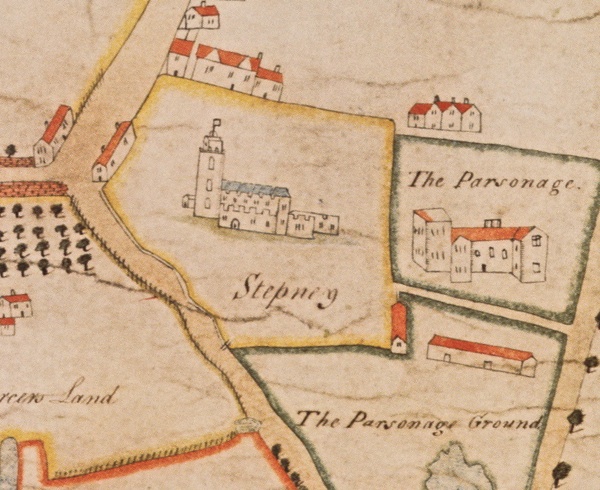Janet Young, daughter of Penelope Thomson from her second marriage, to John Young, was born in 1817 and died some time before 1851. On 12th October 1835 she married Jackson Walton, who was born in England (possibly Manchester) in 1809, and they had two children, a son also named Jackson (1837) and a daughter Mary, (1838).
The 1841 census finds the young family living in Ardrossan, Ayrshire, quite close to Janet’s half-brother, George Robb (b.1833), who was living with his family at Parkend, Saltcoats. In fact, Jackson, who is described as an agent, might even have been working for the same company, and it could be (as I speculated before, in relation to George) that the business came about via a shared family connection.
We know that Janet died before the court case in 1851 over Elizabeth Thomson’s will. However, until today, I was unaware what happened to Jackson and the children after her death. Searching for Jackson’s name on the internet, I found that he had remarried and that three of his subsequent children (he had 12 in all) became well-known artists.
Jackson’s second marriage, probably around 1845, was to Eliza Ann Nicholson, who was from either Dundee or Aberdeen and was born in 1826. Their children were as follows: Gilbert (1846), Barbara (1847), Thomas Balfour (1849), Helen (1850), Anne Eliza Mary (1852), William Grandy (1853), Richard (1856), Dora Grandy (1858), Edward Arthur (1860), Constance (1865) and George Henry (1867). Some of the children were born in England, others in Aberdeen, Glasgow and Dumbartonshire. At the time of the 1851 census, the family was living in Helensburgh, Dumbartonshire, and in 1861 in Neilston, Renfrewshire.
Here’s an extract from the entry on George Henry Walton in the Dictionary of Scottish Artists, which also makes reference to the accomplishments of his siblings:
George Henry Walton was born in Glasgow on 3 June 1867, the youngest of the twelve children of Jackson Walton, a Manchester commission agent, by his second wife, the Aberdeen-born Quaker Eliza Ann Nicholson: the painter Edward Arthur Walton, born near Barrhead on 15 April 1860 was his elder brother and the flower painter Constance Walton his sister. The Waltons had settled in Glasgow in 1862, Jackson becoming first a manufacturer of steam boiler coverings and later a manufacturing chemist, neither successfully. He was, however, a good amateur painter and photographer: one of his elder daughters, the decorative artist, Helen, born 1850, also had marked ability, studying at Glasgow School of Design from 1865 and becoming artistic mentor to the younger members of the family. Jackson died in 1873 leaving his family in reduced circumstances. George had to leave Partick Academy in 1881 at the age of thirteen to become a clerk with the British Linen Bank, but while in its employ he studied at Glasgow School of Art (as the School of Design had become in 1869) and took classes with P McGregor Wilson at the short-lived Glasgow Atelier Fine Arts.
The rest of the article, which details George Walton’s considerable achievements and renown as an architect and designer, can be found here.
Here’s some information about George’s brother Edward, who died in 1922:
Painter, who became one of the ‘Glasgow Boys’. Born in East Renfrewshire, Walton trained briefly in Dusseldorf (Germany), before returning to study at the Glasgow School of Art. Here he met, and began to paint with, James Guthrie (1859 – 1930) and Joseph Crawhall (1861-1913). The group later widened to include George Henry (1858 – 1943) and John Lavery (1856 – 1941), and became known as the ‘Glasgow Boys’. Walton acquired a studio in Cambuskenneth (Stirling) in the late 1880s and many of the Glasgow Boys were visitors.
Walton is recognised as one of the leading Scottish painters of his generation, specialising in both portraits and landscape subjects. He used detailed textures in his work and typically offset pure whites, symbolising the innocence of his subjects, against contrasting dark backgrounds. This technique reflected the influence of the English artist James Whistler, who Walton greatly admired. The two were friends and Walton led a campaign to persuade the Glasgow City Corporation to buy Whistler’s portrait of Thomas Carlyle (1795 – 1881), the first of his works purchased by a public body. Walton moved to London in 1894 and became a neighbour of Whistler. Walton had a studio in Cheyne Walk (Chelsea), where he painted until 1904, when he was persuaded to return to Scotland by James Guthrie and settled in Edinburgh, specialising in portraiture.
Walton’s son was to become Professor of Botany at the University of Glasgow.
And here’s a link to some information about their sister Constance’s flower paintings.
